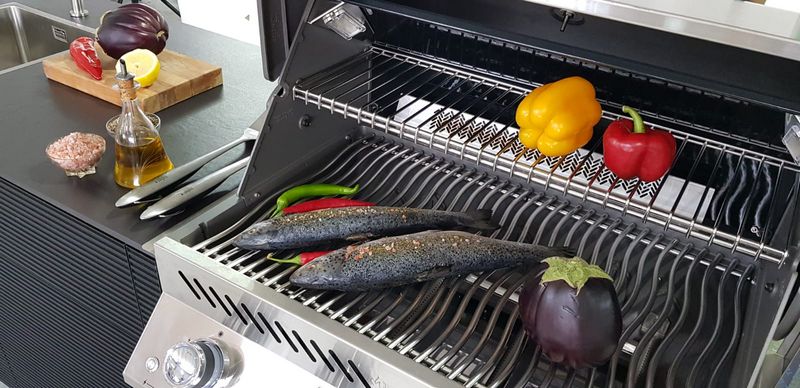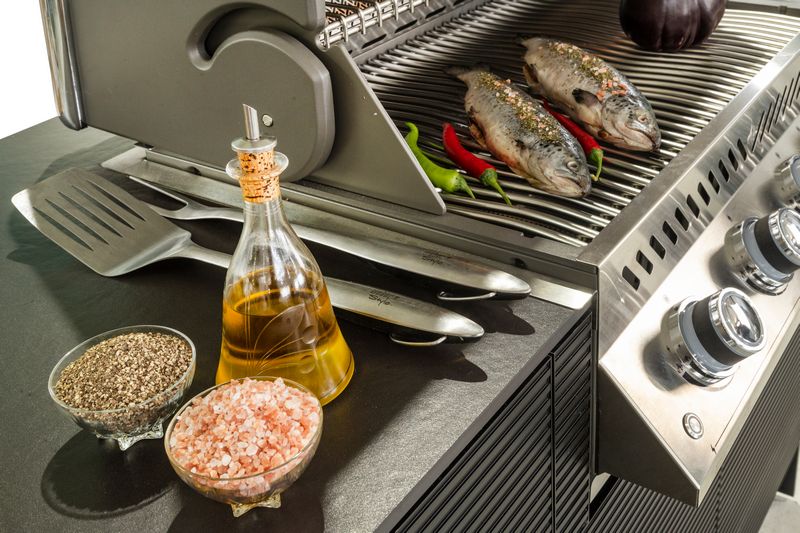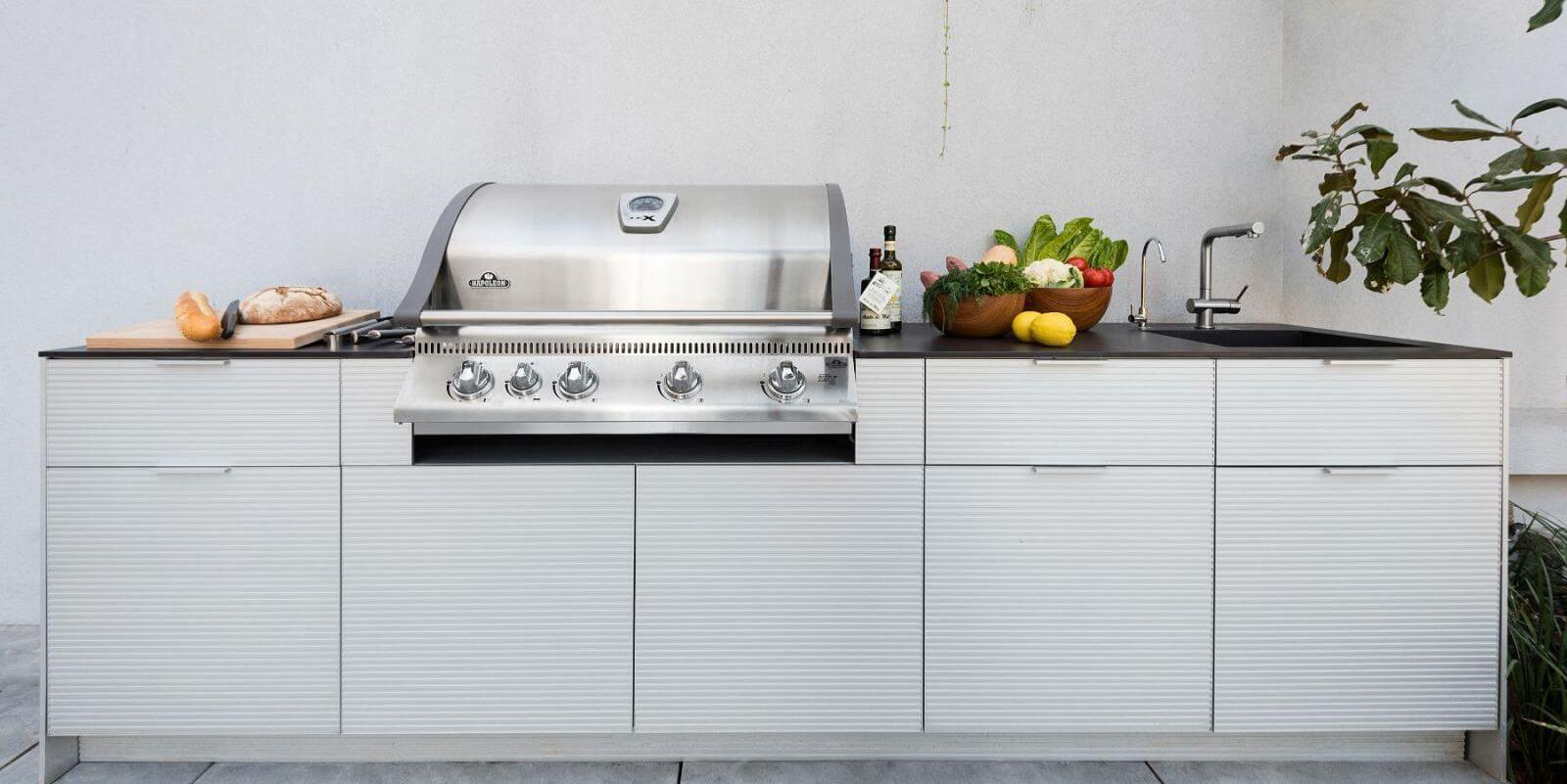
To many people, the gas grill is a significant item in their deck or backyard, creating a unique hospitality experience that includes an exceptional grill meal. The delicious food cooked on the grill forms an enjoyable shared experience.
With the right choice of grill you can achieve the highest quality of food and the greatest ease of use. But how do we know which gas grill is best suitable for our needs? We’ve put together the following tips for you. Bon Appetit.
The first and most important aspect in selecting a gas grill is the materials from which the grill is made of.
The materials of the grill grate, the cookbox and lid, all affect the durability of the grill and thus the ease of use, the potential for breakdowns and of course – the taste of the food.
A grill made from non-quality materials may cause uneven heat distribution, and further more, may rust and absorb damage.
There are two main materials in the market that function as materials for the cookbox and lid.
These materials are sheet metal and stainless steel, and are characterized by different costs and qualities, respectively.
Sheet metal is the cheaper material but it is inferior to stainless steel and its tendency to become damaged and rusted might ruin the gas grill quickly.
Stainless steel, on the other hand, is more expensive, but it is much safer, more durable, and in the long run will prevent malfunctions and complications.

Choosing quality material for the grill burners will also contribute to the durability of the grill over time and reduce the need for the grill’s care and maintenance.
The grill burners are located directly under the grill grate and therefore absorb much grease and liquids dripping on them when used.
The dirt that may accumulate on them requires that they be made of quality material, otherwise they will become worn out and require replacement in no time. Among the common materials on the market for grill burners are as follows:

Whereas stainless steel may be a high-quality material for the gas grill casing, its drawbacks are revealed when used as a grill grate.
When selecting material for the grill grate, considerations of the material’s quality, its durability and the nature of its handling and maintenance must be taken into account. There are three common materials in the market:
BTU is the unit of measure of the combustion and heat intensity produced by the grill.
To ensure proper grilling and sufficient heat for your grill, a proportional BTU measurement is required. There is a direct correlation between the grilling area size and the BTU measurement.
The larger the grilling area, the greater the gas intensity will be required to heat it all properly.
Grill brands and manufacturers tend to specify the degree of BTU in the product independently, so it is necessary to do the calculation independently to determine whether the gas intensity is appropriate for the grill.
According to recommendations, the intensity should not drop from 15 BTU per square centimeter.
Thus, the grilling area will be calculated by multiplying the length of the grilling area by the width of it, then multiplying by 15 BTUs to obtain the recommended minimum gas intensity.
For example, a gas grill with a grilling area of 30 cm long and 50 cm wide will have a total area of 1,500 square centimeters.
This result will be multiplied by 15 BTU and the result will be 22,500 BTU, the minimum gas intensity for the given grilling area.
The measurement of gas grill BTU is insufficient to ensure a high-quality grill with the finest cooking quality.
The degree of BTU determines only the heat intensity obtained, but in addition, it’s important that the heat distribution is conducted correctly.
The heat distribution is obtained by the division to burners, and the more gas grills the burners have, the more efficient the heat distribution is.
However, do not expect an unreasonable number of burners in your gas grill. Usually, even for particularly large grilling surfaces, no more than six burners are required.
In addition to the number of burners, it is necessary to make sure that the BTU is divided correctly between them.
Ideal heat distribution will be conducted when all the burners consume the same level of BTU, which is the division of the overall BTU measurement in the number of burners.
For example, if we recall the above mentioned gas grill that requires at least 22,500 BTU, if it has a couple of burners, then we should expect that each of them have intensity of at least 11,250 BTU.

Several brands offer gas grill supplements in the form of side burners.
These should contribute to proper heat distribution and to quality food cooking in every section of the grilling area.
However, side burners require additional space that may come at the expense of the grilling area, so space considerations should be conducted to suit your outdoor kitchen, backyard and garden.
If we have decided to select a gas grill that includes side burners, it should be noted that the gas consumption of these burners should not be included in the gas consumption calculations explained above.
The desired BTU measurement which was obtained from calculating the grilling area is the gas consumption of the central burners only and the gas consumption of the side burners should be added to them and not come at their expense.
The size of the grilling surface should be determined by the amount of people the gas grill usually feeds.
The more diners, the more food is needed at the same time and therefore the grilling surface should be larger.
This is also true when it comes to more types of food – if we want to prepare more types of food at the same time we will need enough space for all of them, with a flexible ability to divide the material, so more grilling space will be needed.
As a standard for comparison, a grill which feeds five diners with the same type of food would need a grilling surface of 1,500 square centimeters.
A greater number of diners than that or more types of food (vegetables, skewers, red meat) will require increasing the grilling surface.
There are grills that incorporate a back burner with infrared technology designed for burning meat on a rotary grilling axis using the Rotisserie method. In addition, the burner enables heat retention for cuts of meat placed on the elevated grill grate. Or slow cooking for a stew or broth.
It should be noted that there is no clear correlation between the size of the grilling surface and the grill size. Gas grill products differ in their additions such as storage units, side burners etc.
Size considerations should be conducted firstly according to the grilling space, and if possible, select a grilling space slightly larger than required according to your calculations, just to be on the safe side.
If you can invest in more room for your grill in the garden or roof areas, then you may want to consider extras such as storage units, worktops, sinks, faucets, refrigerators, freezers, ice machines, meat smoker, Tabun oven, beer tap, conversion counter, and so on.

To ensure proper cleaning and solid gas grill maintenance, an effective fat drainage system is required.
In the absence of proper fat drainage, the accumulation of fat will cause a phenomenon called instigation, in which the meat fat is on fire.
The fat drainage system is actually a surface that is placed under the grill grate which annexes the fats and can be cleaned. In order for the grill to function at its highest quality, the drainage system must aim to include the following features:
The gas grill is an item that will accompany you for a long time so it is important to choose it wisely.
Considerations that include proper selection of materials and adjusting the gas grill measurements and features to your needs will ensure an efficient and easy-to-use grill that maintains durability and intactness.
We invite you to contact us at Outopia for advice from our best experts in order for you to make all the right decisions.
This will ensure a high-quality family-friendly grill experience that will accompany you throughout the years.